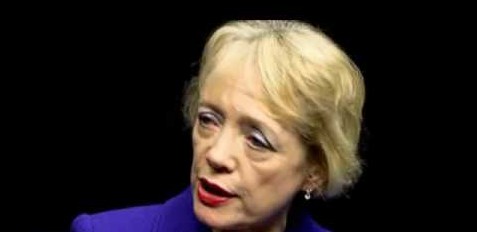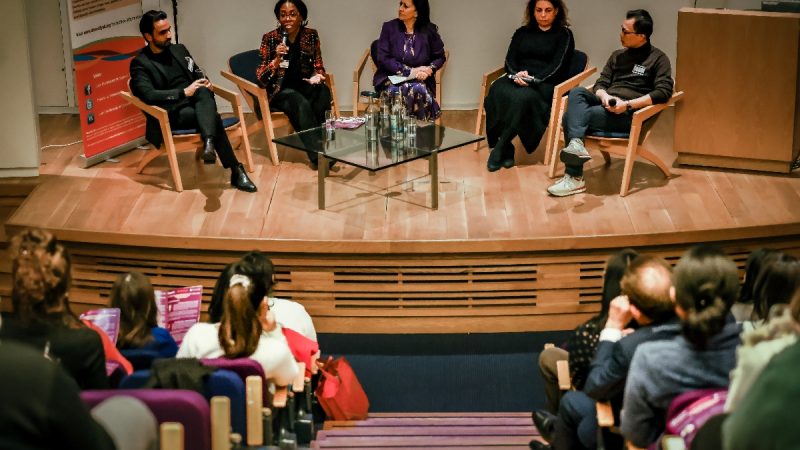Britain on track to meet women on boards target

The 2015 Cranfield Female FTSE Board Report confirms that Britain’s top boardrooms are set to meet the 25% women on boards target this year. The report reveals 23.5% of FTSE 100 boards are now female (up from 20.7% last year), with 263 female held directorships across the FTSE 100. The percentage of non-executive directors has increased to 28.5% and women in executive directorships is at an all time high of 8.6%. Only 17 more female appointments are needed across the FTSE 100 boards to reach the target set by the Lord Davies review. If the appointment rate of one woman to every two men appointed is sustained over the coming months, the Cranfield authors expect the 25% target to be met before the end of this year.
“The turnover of directorships is key to driving change and will be decisive over the coming months,” explained Professor Susan Vinnicombe CBE, co-author of the report and Director of the Cranfield International Centre for Women Leaders. The percentage of new appointments going to women over the last six months was 31.6%.
FTSE 250 gender diversity poorer than FTSE 100
The percentage of women directors on FTSE 250 boards has also risen to 18%, with 65 FTSE 250 companies having met the 25% target. However, it is not all good news for the FTSE 250. Twenty-three still have no women on their boards and the percentage of women holding executive directorships has fallen to 4.6%.
Professor Vinnicombe comments: “It has taken many years for the debate on women on boards to be taken seriously, but we are now seeing significant progress. There is no doubt that the Davies Review and the threat of EU-wide quotas has had a major impact on this progress. It is crucial that the momentum that has built up around this issue is maintained, especially with the support of whoever is in power after the General Election.”
Forty-one companies in the FTSE 100 have now reached the 25% target with many of them far exceeding it. Leading the way in joint top place of this year’s ranking, with 45% female representation on their boards, are Diageo and Intercontinental Hotels Group. Recognition must also go to Admiral Group plc with 41.7%, and Capita plc and Kingfisher who both have 40%, which includes two women in executive directorships on their boards.
Dr Elena Doldor, co-author of the report, said: “It will be difficult to sustain the pace of change without more ambitious and sustainable measures. Our predictions suggest that as we approach 2020, women’s representation on FTSE 100 boards is likely to stagnate around 28%. There are still not enough women on executive committees or in the executive pipeline. Introducing aspirational and measurable targets for women at all levels is the only way to achieve real progress. Growing the female talent pipeline needs to be high on the agenda for every board, CEO and executive committee.”
UK is now 5th in the world for gender presentation
The report also takes a look at how the UK’s progress compares to the rest of the world. Over the past decade the percentage of women on top boards has increased in every country across Europe, varying from 3.7% in Austria to 22.5% in France. The UK registered an increase of 12.6 percentage points and is now fifth in the world.
“It is pleasing to see how far we have come without the need for quotas. But the burning issue remains that not enough women are being appointed to executive director roles in the UK” said Professor Vinnicombe.
No all-male boards left
Minister for Women and Equalities, Nicky Morgan said: "We have almost doubled women's representation on FTSE 100 boards in four years; we only need 17 more women to be appointed to these boards and we will have met the 25% target we set ourselves. When we started this work in 2011 there were 21 FTSE 100 boards that had no women on them. Now there are no all-male boards left. This is great news.
"But to keep on track we also need to ensure that women are well represented at senior executive level too, making them ready to take up board level positions. In the FTSE 100, the total number of female senior executives has increased from 19.9% to 21% which is to be welcomed, but we need to keep up the pressure to see this increase still further. This is not only good for women, but good for business too. Boards which reflect their customers and clients are better able to understand their needs and respond to them."
Low number of female chairs and executive directors
Lord Davies of Abersoch said: "The rate of change that we have seen in FTSE 100 companies over the last four years has been remarkable. The voluntary approach is working, boards are getting fixed. We now have to increase the low number of female chairs and executive directors on boards and the loss of talented, senior women from the executive pipeline.
"I have never doubted that Britain has extraordinary talent, or that there are plenty of credible, experienced women, willing and capable of serving on British boards. FTSE companies are now making real efforts to seek out and unleash the full extent of this talent."
Once more the Cranfield report includes a list of ‘100 Women to Watch’. The authors have identified 100 women who are currently on the Executive Committees of FTSE 250 companies or in significant roles of other major institutions, who are ready for a board position and should be considered by search consultancies and nomination committees. The list highlights the many qualified women whose experience comes from sectors other than exclusively or primarily corporate.
About the Cranfield Report
The report from the Cranfield International Centre for Women Leaders is co-authored by Professor Susan Vinnicombe CBE, Dr Elena Doldor, Dr Ruth Sealy, Dr Patricia Pryce and Caroline Turner. Cranfield’s International Centre for Women Leaders is committed to helping organisations to develop the next generation of leaders from the widest possible pool of talent.
Click here to download a copy of the 2015 Cranfield Female FTSE Board Report (PDF)
Click here to download a copy of the ‘100 Women to Watch 2015’ list (PDF)




